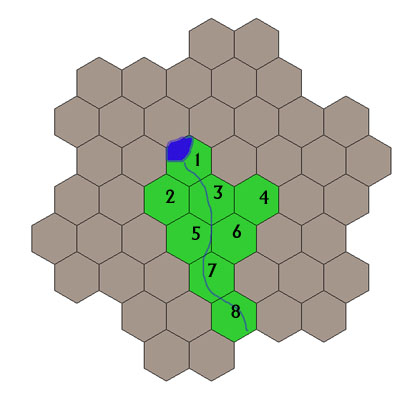
Back in 2012, I was chatting with a guy online who claimed that, by the year 2017, computer games would exist which would allow GMs to create off-the-cuff in real-time just like they can currently improvise at the gaming table.
And I said, “Bullshit,” for what is probably obvious reasons to most of you, but nevertheless baffle people who seem to think that the special effects in MCU movies are created by someone saying, “Show Captain America punching Thanos with Thor’s hammer” and then thirty seconds later having a fully rendered shot pop out of the computer.
(Short version: That’s not how that works. And the difficulty of generating a fully interactive version of the scene properly rigged and optimized for a computer game engine would be at least an order of magnitude higher, probably more.)
In the process of calling bullshit, however, I ended up creating an example of off-the-cuff design in a tabletop RPG that would be virtually impossible to replicate in a computer game engine even with procedural content generators vastly superior to anything we have available to us today. (And even moreso in 2012 or 2017.)
It was nothing particularly spectacular, but there were a few touches of the fantastical that I think are rather evocative and worth sharing, and so I did that here on the Alexandrian back in 2014.
But here’s the thing: We’re definitely closer to that future now than we were in 2012 or 2014.
(I mean, that’s tautological. But you know what I mean.)
So I thought it might be fun to take the descriptions from the Valley of the Sapphire Waves and see what images are conjured forth by Midjourney.
My methodology here is relatively simple: I input a prompt using more or less the words from the original write-up of the Valley. Midjourney will then generate four images, and I’ll select whichever one I think is best. (“Best,” of course, is subjective, but it will be some combination of accurate, evocative, beautiful, and useful. Basically, it will be the image I would select if I was looking for a visual handout to use while GMing.)
I don’t know what the results will be. (I suspect “surprisingly good, but not great,” but we’ll see.) And, of course, no matter how immaculate the result is, we’ll still be miles away from running a game for my friends in a computer game engine and getting the computer to pop out this entire valley (or even just these specific locations) in a seamlessly playable form in the less than five minutes it took me to originally improvise for table use.
VALLEY OF THE SAPPHIRE WAVES
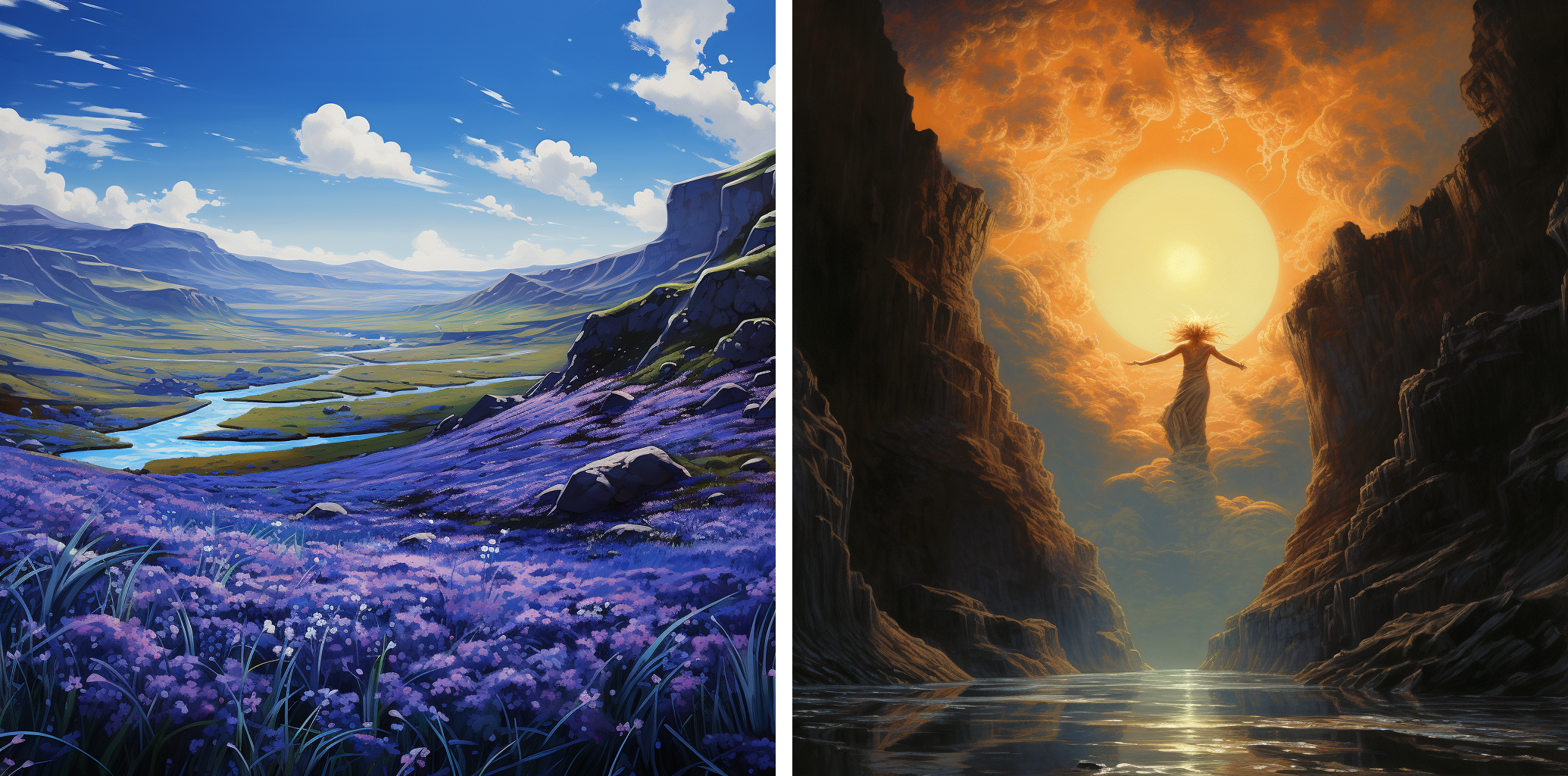
The Valley of the Sapphire Waves is filled with rolling fields of vibrant blue grass. Anyone standing in the waters of the valley will perceive the sun as eclipsed because Helios mourns the loss of his first wife (the Ur-Goddess of the Rivers, see hex 1).
HEX 1
The Falls of the Ur-Goddess. The 300 foot tall waterfall at the end of the valley flows up because it is the place where the Ur-Goddess of the Rivers was slain millennia ago.
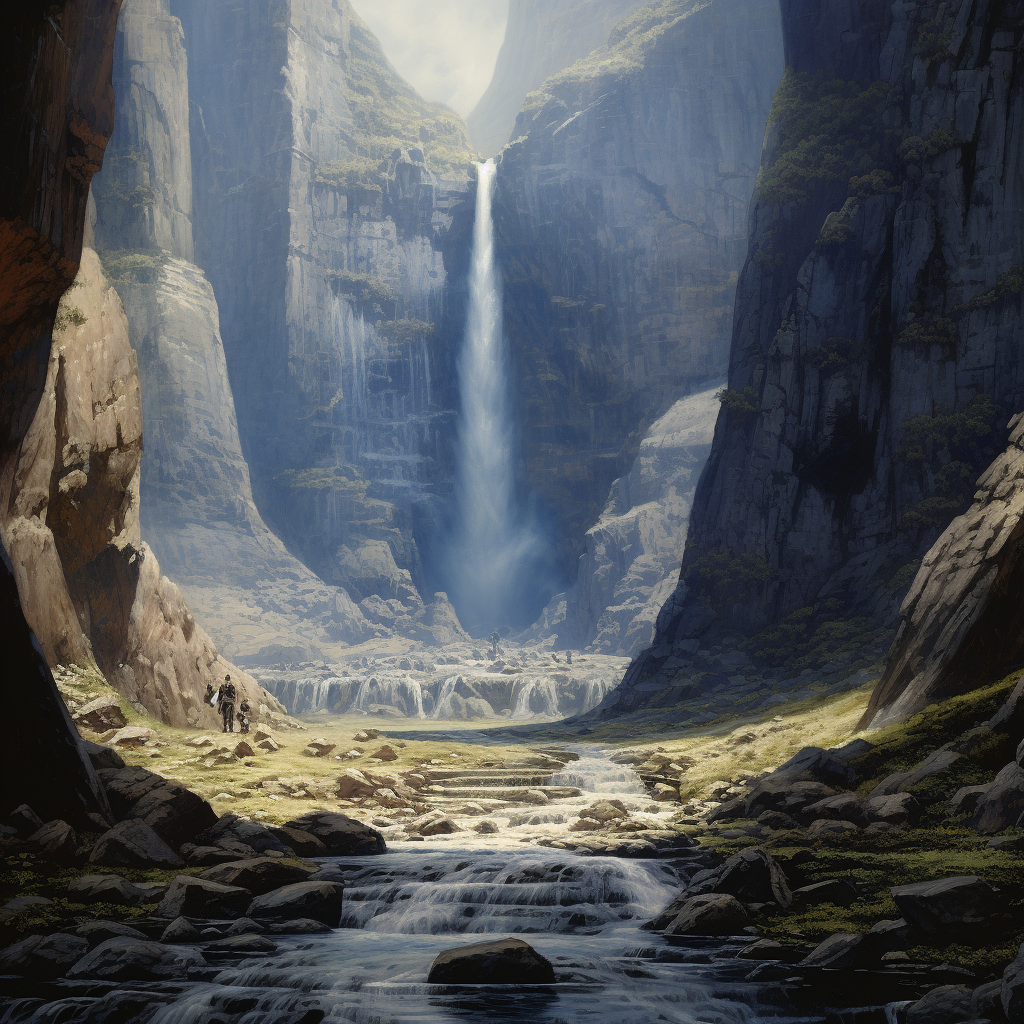
HEX 2
Obelisk of Moonstone. Raised as a holy site by the Heresy Cult of the Ur-Goddess. The moonstone will heal anyone touching it at night, but under the rays of the sun it is cursed. (Anyone touching it suffers as per a bestow curse spell.)
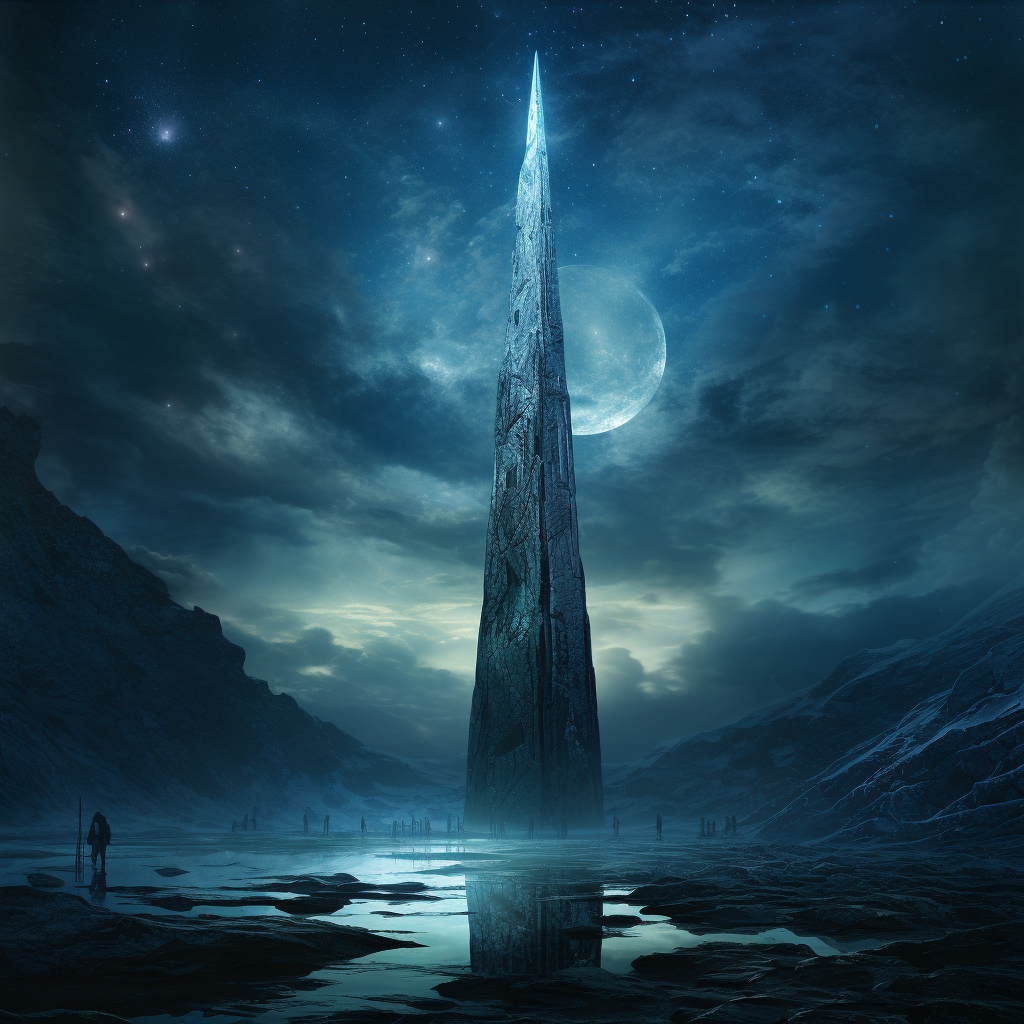
HEX 3
The Stirge Mires. 1 in 3 chance of encounteing 1-6 stirges.
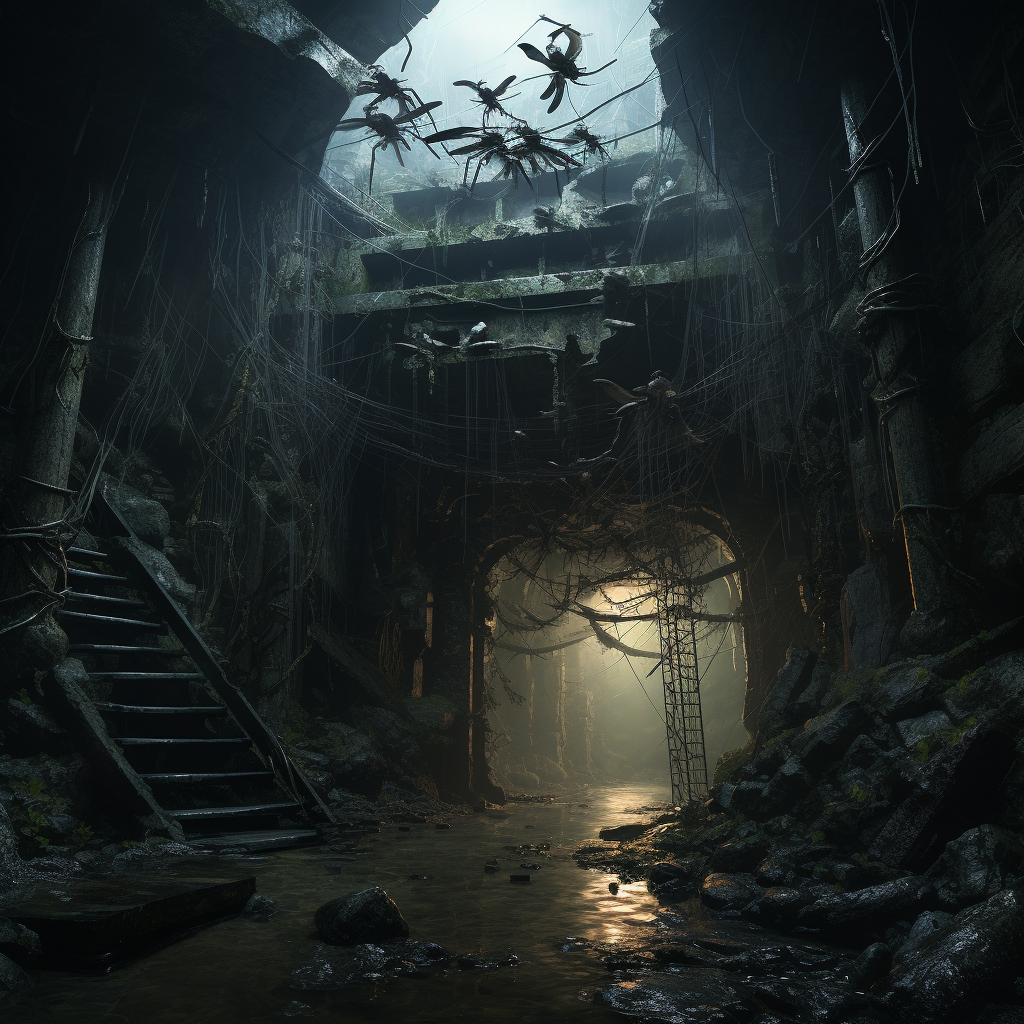
HEX 4
Goblin Moonstone Scavengers. Small tribe of goblins scavenging the moonstones scattered in rocky crevasses here.
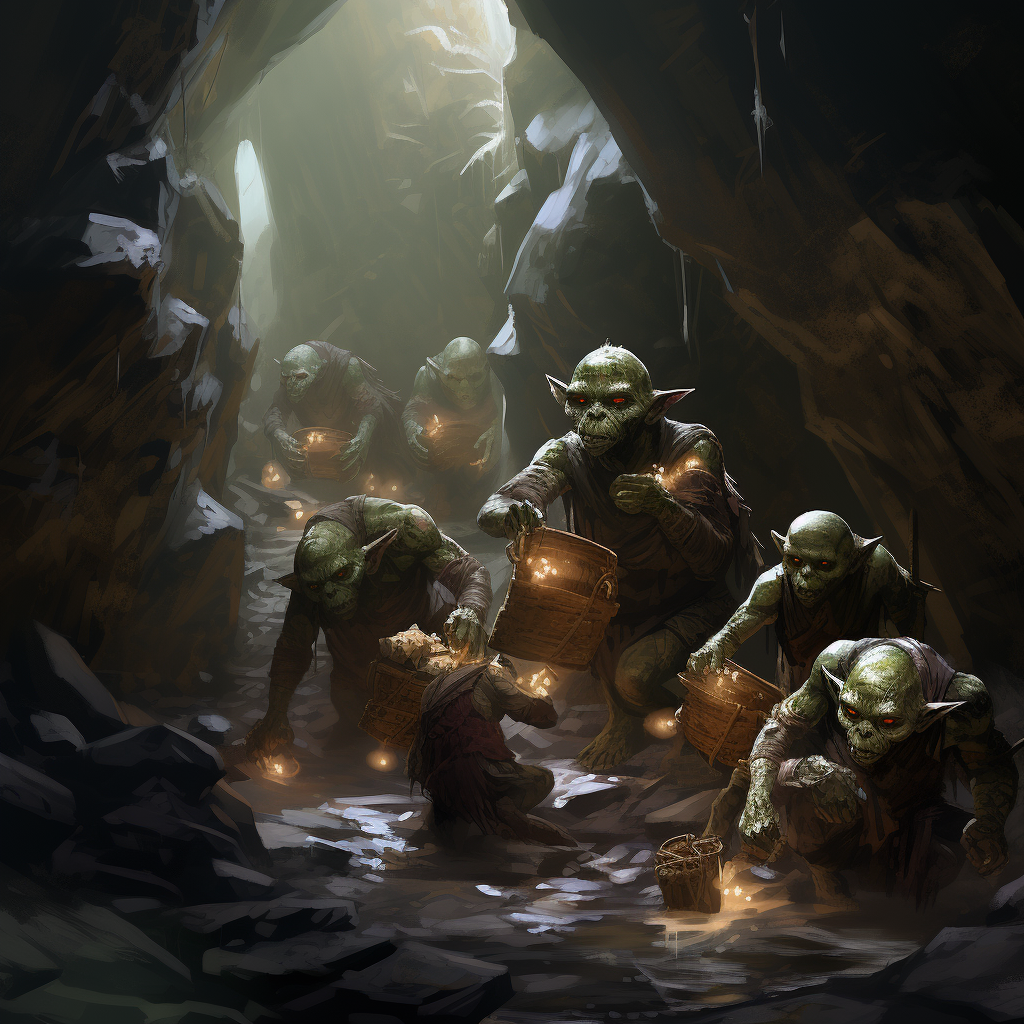
HEX 5
Vale of the Dryad. This forestland is protected by a dryad whose spirit is bound to a treant. All the squirrels here can talk, many spontaneously forming acting troupes performing A Midsummer Night’s Dream.
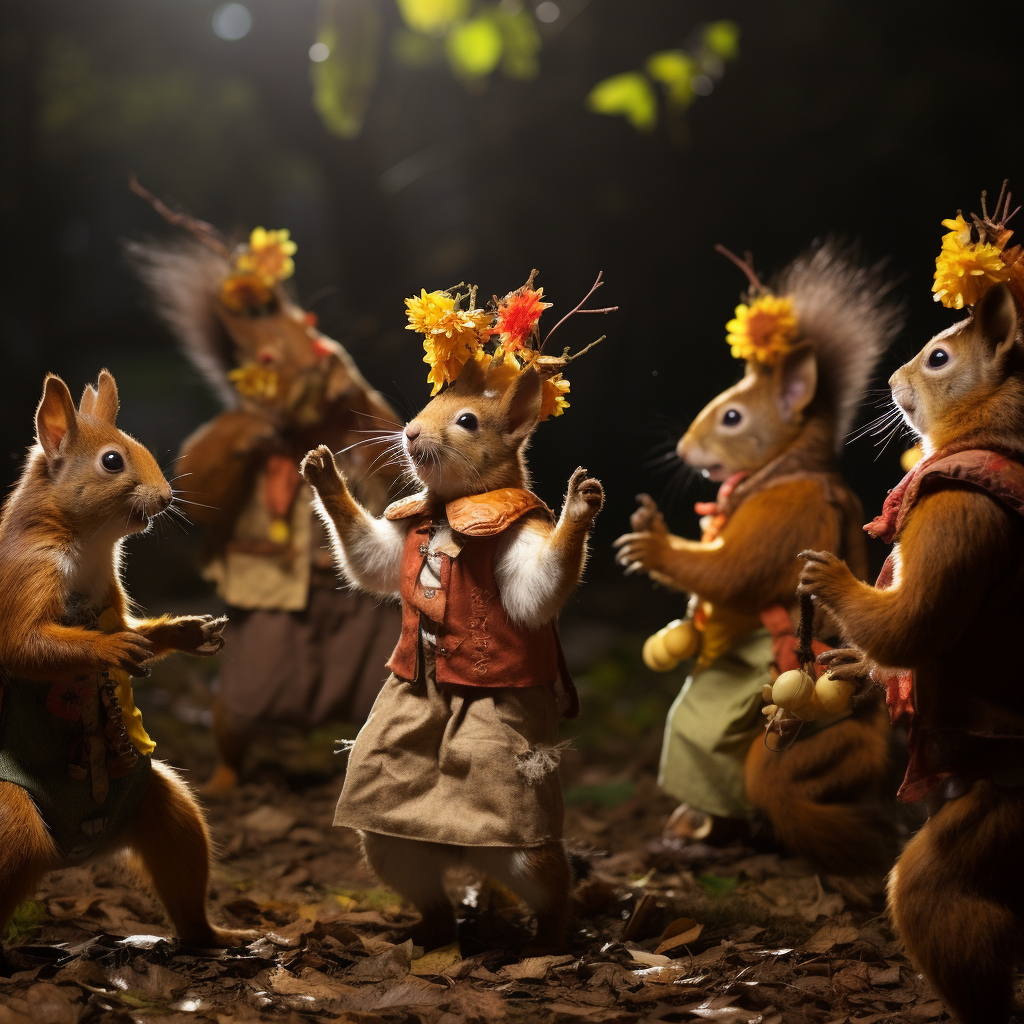
HEX 6
Graveyard of the Moonstone Cults. 1 in 3 chance per turn of encountering 1-3 wights.
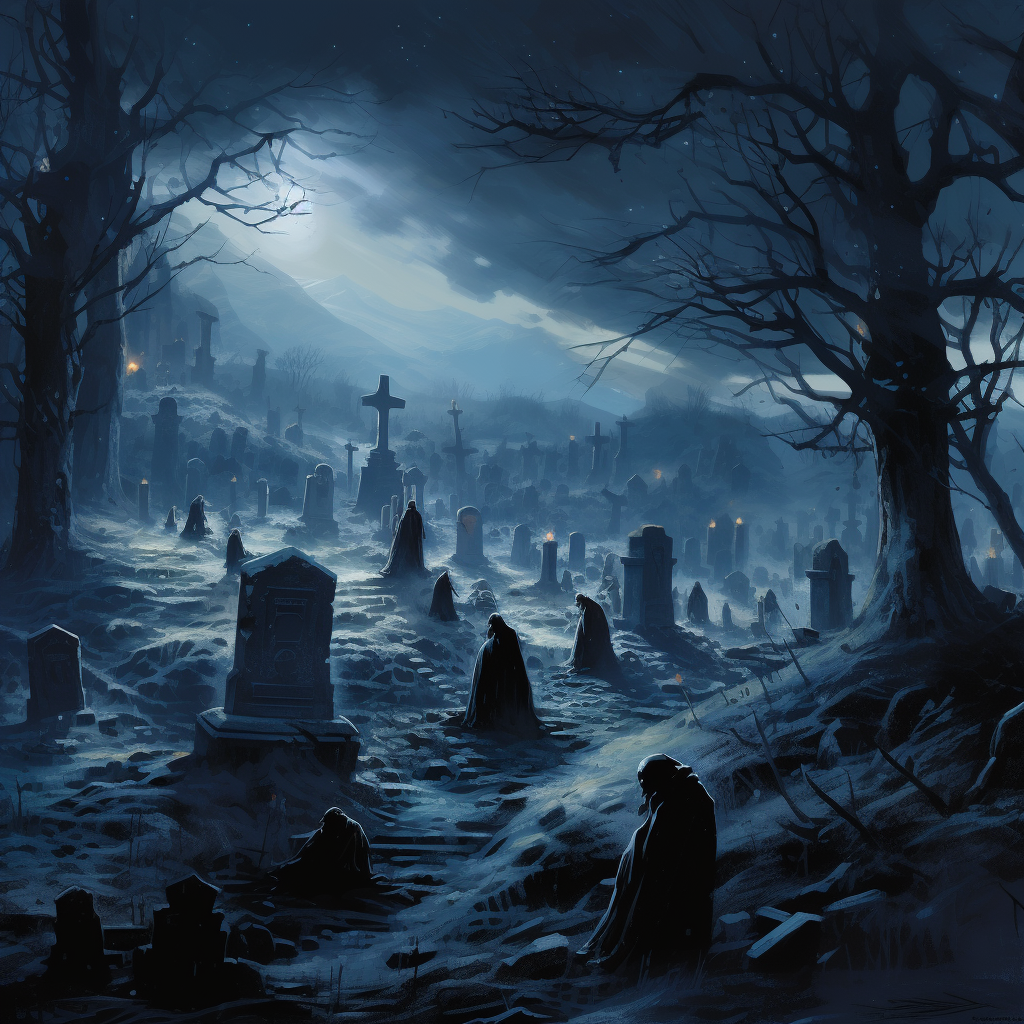
HEX 7
Medusa’s Vale. A medusa makes her home in the Sinkhole of Statuary.
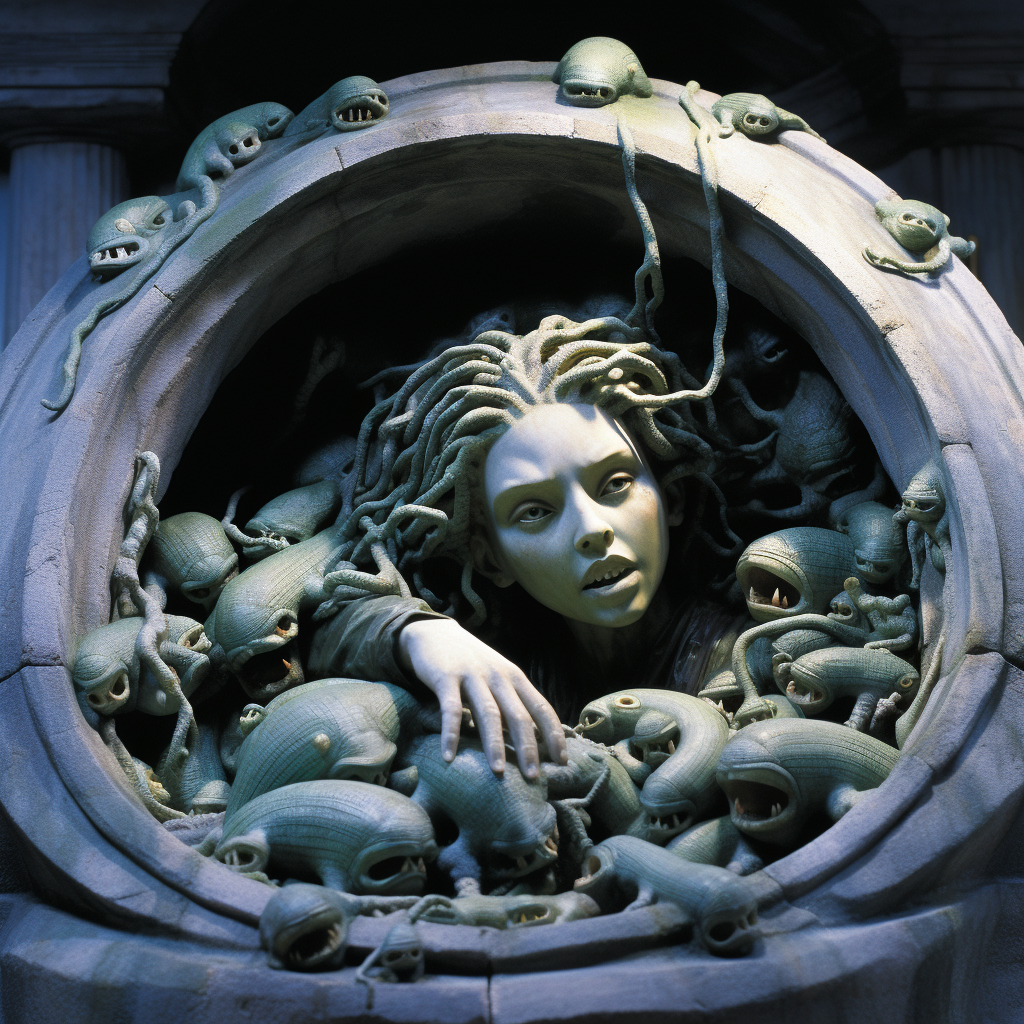
HEX 8
Sphinx Guardians. Once a great tribe of sphinxes guarded the entrance to the valley (they were placed there by Helios), but their numbers are depleted. 1 in 3 chance of encountering a sphinx, which 75% of the time will be an undead skeleton. Remaining sphinxes will ask sun-oriented riddles before attacking.
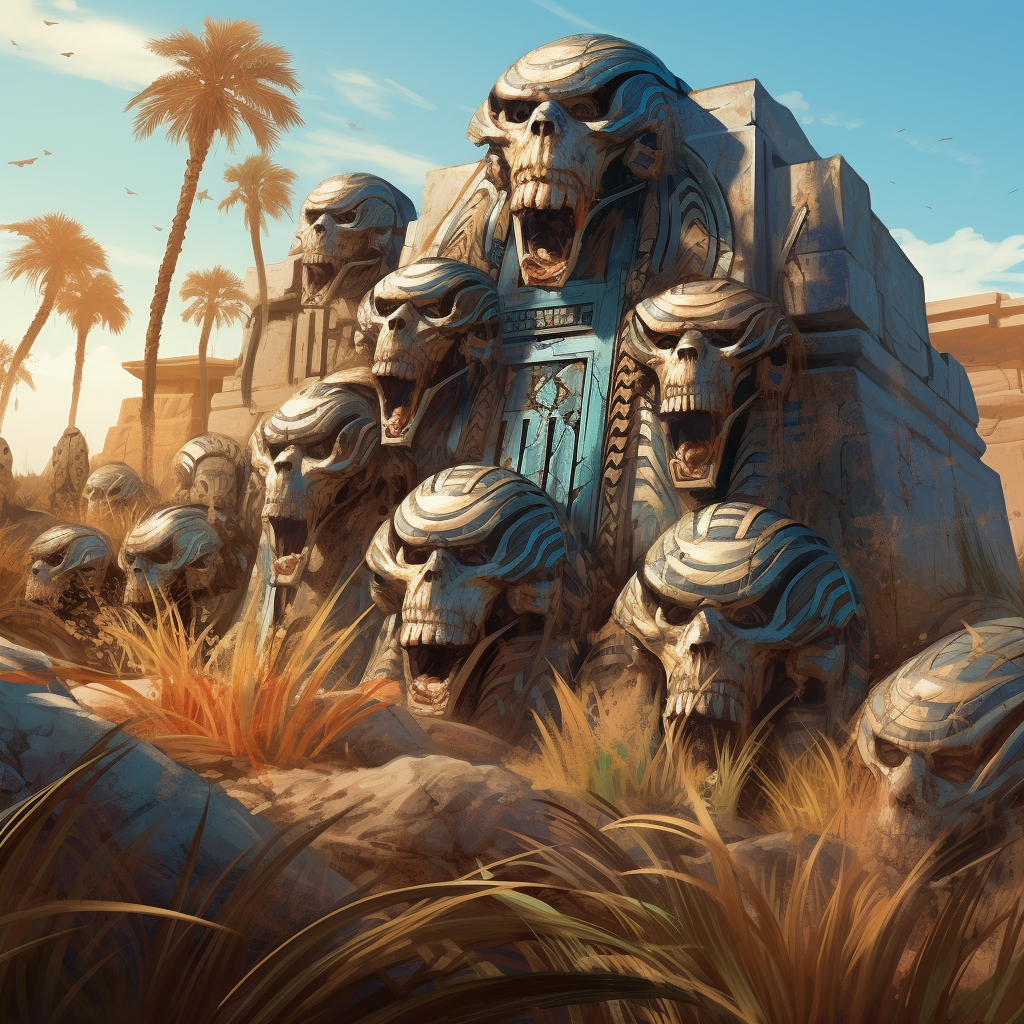
POST MORTEM
I’m not entirely certain Midjourney knows what a sphinx is. (Or, at the very least, “sphinx skeleton” leaves it in a tizzy.)
The most accurate image is probably of the squirrels performing A Midsummer Night’s Dream. (The Falls of the Ur-Goddess aren’t bad, but they’re definitely not flowing upwards.)
I like Helios rising to eclipse the sun, but for me the most compelling image is probably of the Medusa’s sinkhole. Ironically, this is also (with the possible exception of the undead sphinxes) the most inaccurate of the images. But I am deeply intrigued by the creatures crawling around her.
From a practical standpoint, the whole process of generating images took me forty-five minutes to complete. So we’ve obviously still got a long way to go here.
It’ll be interesting to see what things look like if we check back in on this in another decade. (Or three.)












I didn’t have much luck generating landscapes and location shots with AI.
I found it useful for generating the following scenarios though:
– faces for NPCs, which instantly makes them recognizable
– images of quest related objects, if there are multiple and they would be hard to differentiate by text descriptions only. For example, on a mission to sabotage sabotage a luxurious sport car before a street race, my players broke into a garage, but they found six cars parked there. They needed to figure out the correct one, which would be hard if they couldn’t see them.
– visual clues such as security cam footage. I was even able to generate such a shot during a short break, so this can be handy enough to use a part of improvisation, rather than prep.
As for text tools, they also seem to have their uses.
“…people who seem to think that the special effects in MCU movies are created by someone saying, “Show Captain America punching Thanos with Thor’s hammer” and then thirty seconds later having a fully rendered shot popping out of the computer.”
Probably because those same MCU movies show Tony Stark creating entirely new technological inventions using a process very similar to that. 🙂
I wanted to generate character images for 2 unrelated scenarios. First was a TMNT-styled game called Cosmic Cossack Capybaras and I asked AI for an image of a antropomorphic capybara dressed as a cossack. Another scenario was a noir mystery in KeyForge setting. The character was a saurian (dinosaur) noir detective. In both cases the results were completely unusable. Maybe I’m just bad at prompts…
Oh, didn’t see you’d updated this, I tried posting over at the original 2014 post but I’m not sure if the comment got through.
I posted the following to ChatGPT:
Generate brief descriptions of 20 areas in a fantasy game. Descriptions should be no more than 3 sentences. Describe 1-location; 2- monster or other encounter; 3-treasure or other point of interest for adventurers.
It produced, in about 30 seconds, 20 adventure locations. They were a bit generic, but I’m sure the prompt could be tweaked.
It’s not a game yet, but it’s a lot closer.